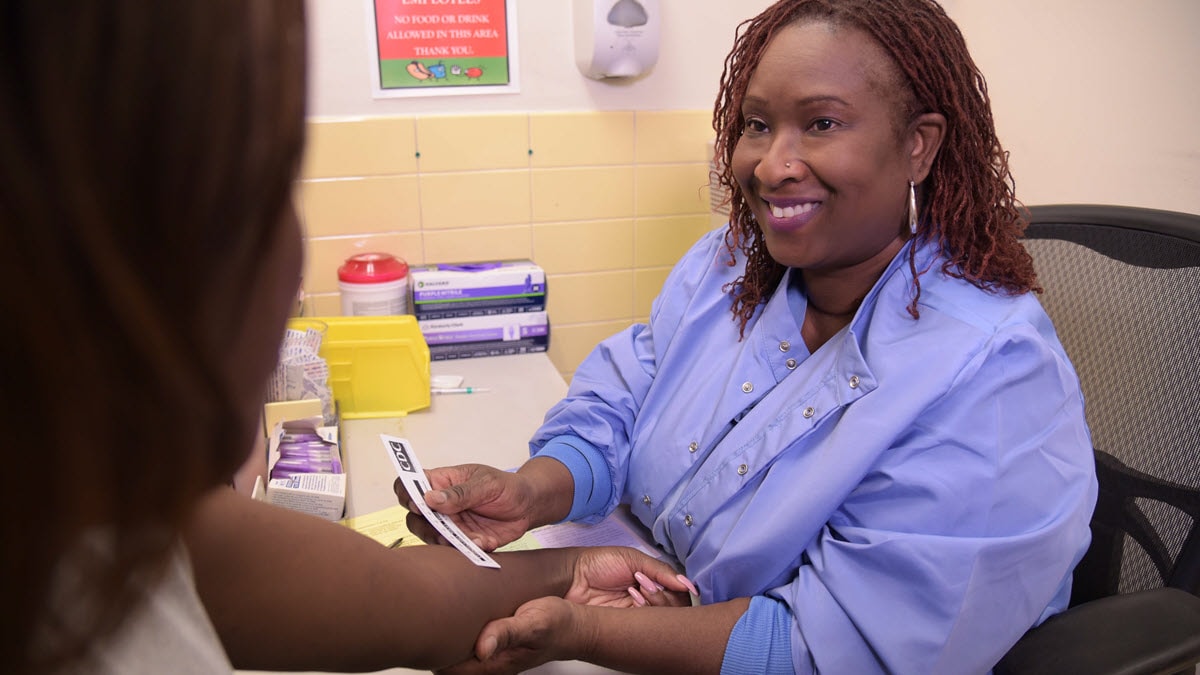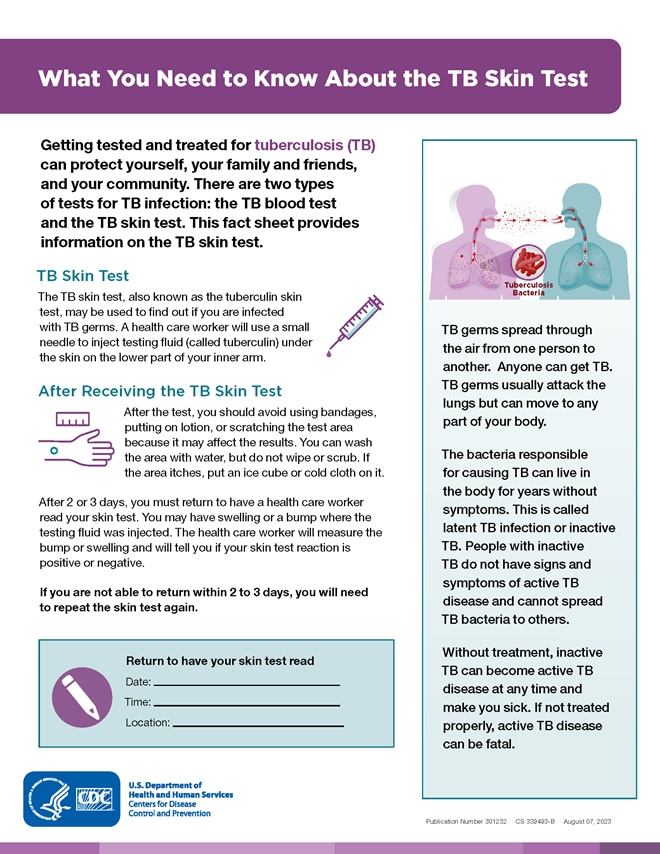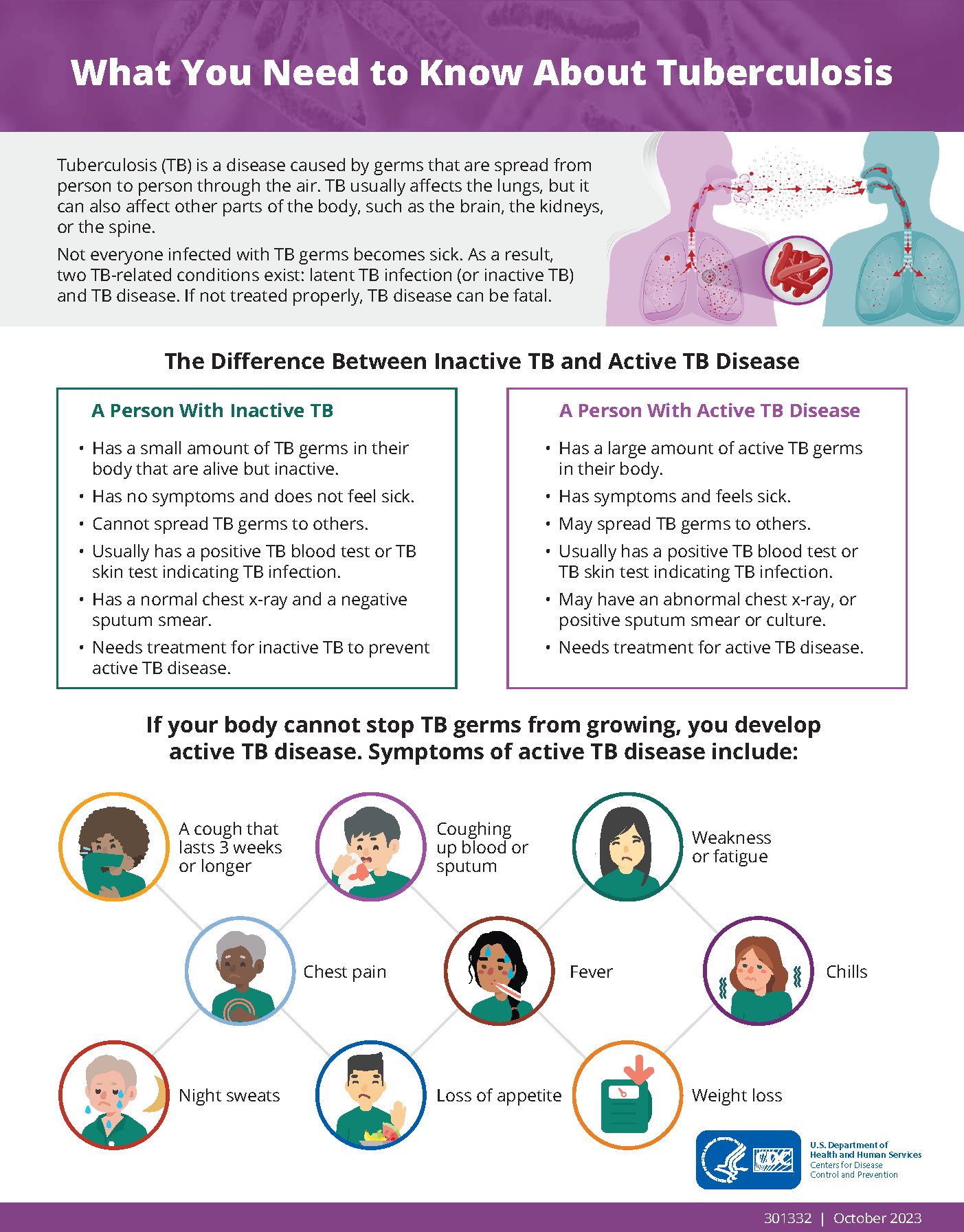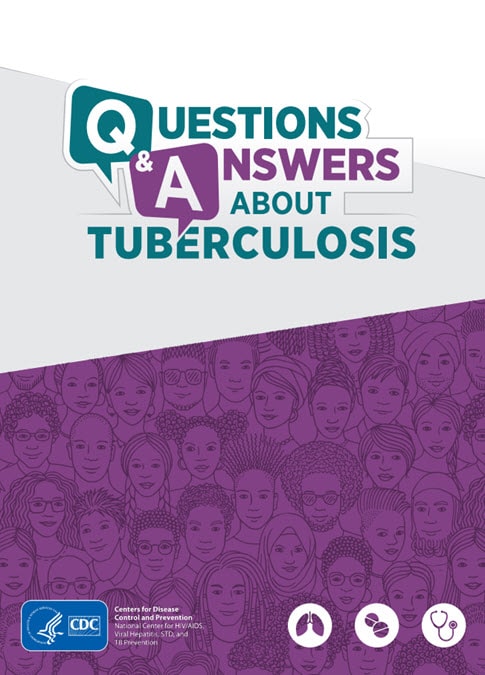Key points
- A tuberculosis (TB) skin test can tell if you have TB germs in your body.
- A TB skin test requires two visits with your health care provider.
- The TB vaccine may cause a false-positive TB skin test reaction.

TB skin test
The TB skin test is also known as the tuberculin skin test. If you receive a TB skin test, you will have two visits with your health care provider.
First visit
During the first visit, a health care provider uses a small needle to put some testing material under the skin on the lower part of your inner arm. The testing fluid is called tuberculin.
Second visit
After two or three days, you must return to the clinic to have the skin test read. A trained health care provider will measure the size of the bump or reaction. A positive or negative test result depends on the size of the bump or reaction.
If you cannot return after two or three days to have the test read, you will need to have a skin test again.
Who can get a TB skin test
Most people can get a TB skin test. This includes:
- Infants,
- Children,
- Pregnant people,
- People with HIV infection, and
- People who had a negative TB skin test or an undocumented TB skin test.
You should not get a TB skin test if you have had a severe reaction, such as a severe allergic reaction, in the past. Talk to your health care provider about the TB blood test.
If you received the TB vaccine
Tell your health care provider if you received aTB vaccine
Bacille Calmette-Guérin (BCG) is a vaccine for TB disease. The vaccine is not generally used in the United States. It is given to infants and small children in countries where TB is common. It protects children from getting severe forms of active TB disease, such as TB meningitis.
Tell your health care provider if you have received the TB vaccine, especially if you are getting tested for TB infection because it can cause a false positive TB skin test reaction. TB blood tests are the preferred tests for people who have received the BCG TB vaccine.
How to get tested
You can get tested for TB at the health department or at your health care provider's office. Your health care provider will choose the TB test that is best for you. Public and private health care plans may cover TB testing costs.
Finding a test location
Two-step TB skin test
Your health care provider may perform a two-step TB skin test if you are going to be screened for TB periodically (for example, if you are a health care worker).
Some people with inactive TB, also called latent TB infection, have a negative reaction to the TB skin test when tested years after being infected. However, if they are tested again within a year of the first test, they may have a positive reaction. The first TB skin test can "trigger the memory" of the immune system, boosting its ability to react to the second TB skin test.
It may appear that these people were infected between the first and second tests. However, the second positive test reaction is actually a boosted reaction due to TB infection that occurred a long time ago.
The two-step TB skin test can lower the chance that a boosted reaction from an old TB infection will be misinterpreted as a recent infection. If the reaction to the first-step TB skin test is classified as negative, a second-step TB skin test is given one to three weeks after the first test is read.
Understanding TB skin test results
Positive TB skin test
A positive skin test result for TB infection means you have TB germs in your body.
Keep a record of your positive test result
Once you have a positive TB blood test or TB skin test result, you may still have a positive test result on future TB tests. This includes even after you finish taking all of your TB medicine for inactive TB or active TB disease.
Ask your health care provider for a written record of your positive TB skin test result. This will be helpful if you are asked to have another TB test in the future.
Negative TB skin test
A negative skin test result for TB infection means inactive TB or active TB disease is unlikely, but your health care provider may do more tests, especially if:
After you get your results
If you have a positive TB skin test result, you have TB germs in your body. Your health care provider will do other tests to determine if you have inactive TB or active TB disease. These tests may include a chest x-ray, and a test of the sputum (phlegm) you cough up.
Your health care provider will discuss your diagnosis with you and recommend treatment.
Resources
What You Need to Know About the TB Skin Test Fact Sheet
What You Need to Know About Tuberculosis Fact Sheet
Questions and Answers About Tuberculosis Booklet



